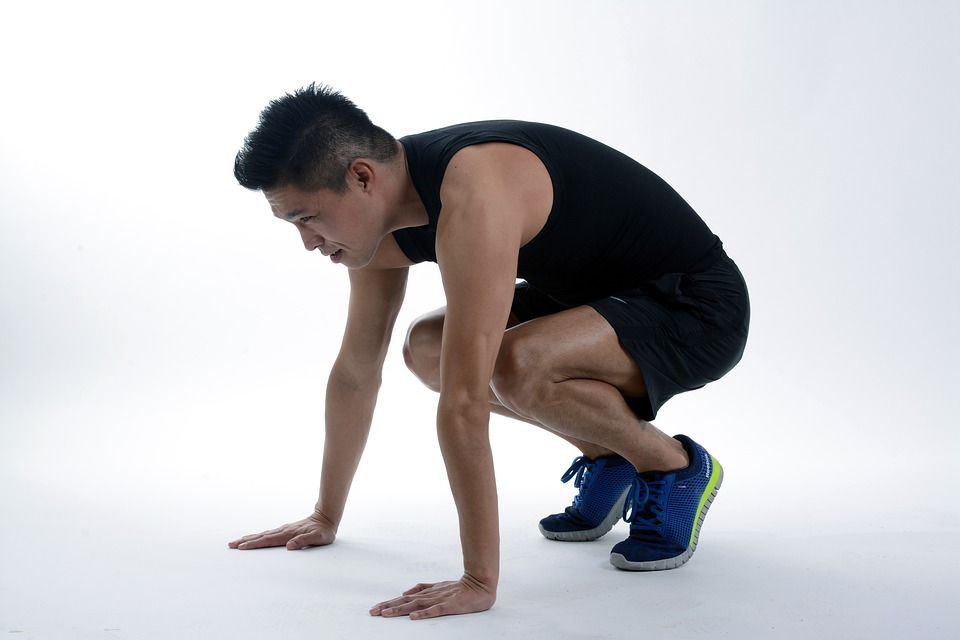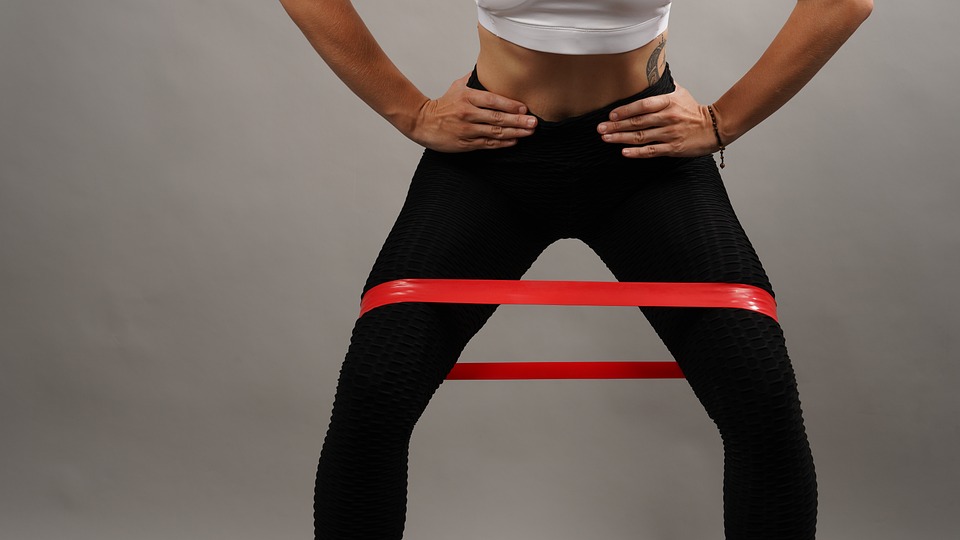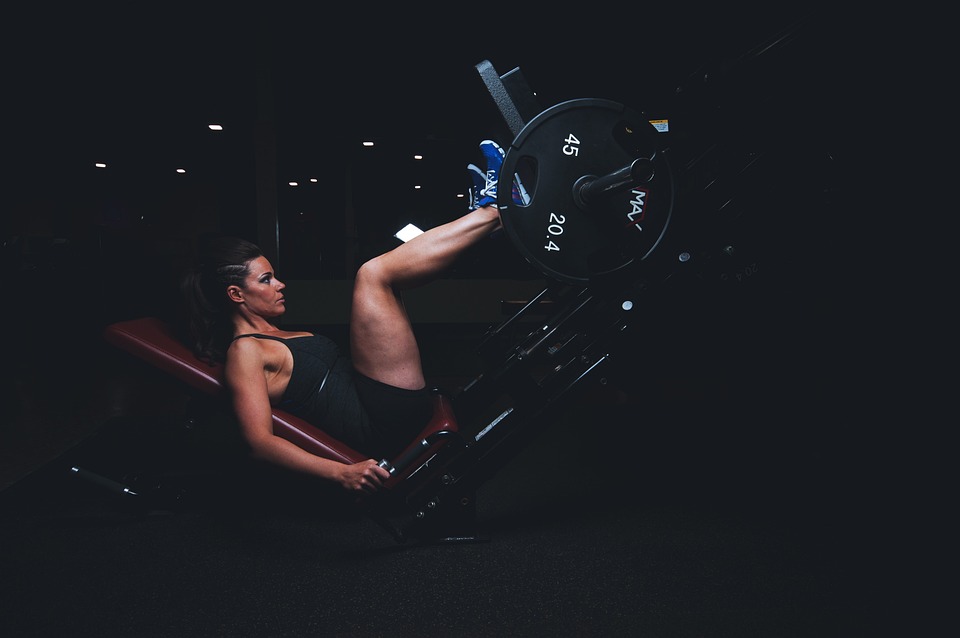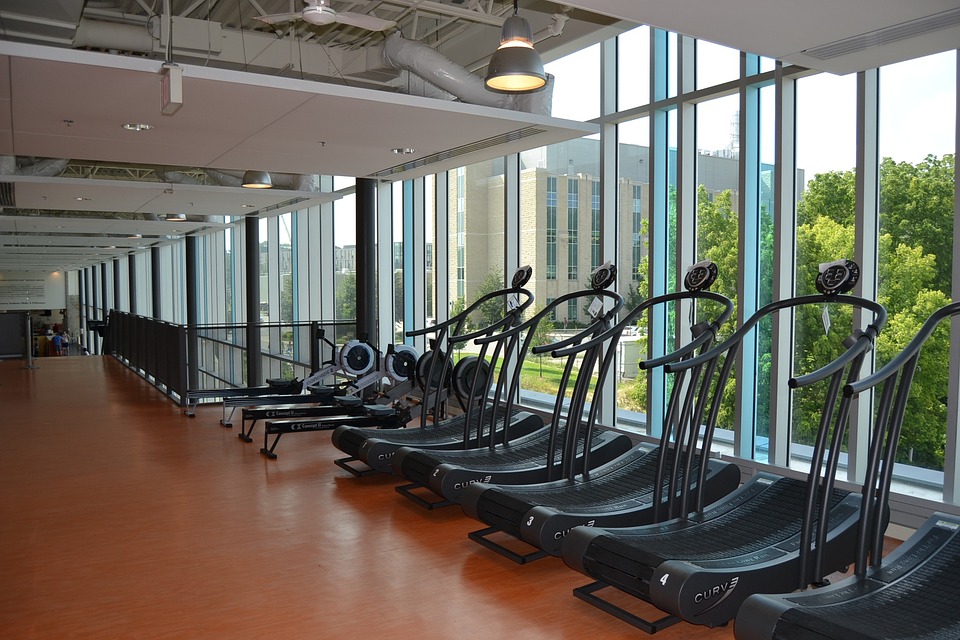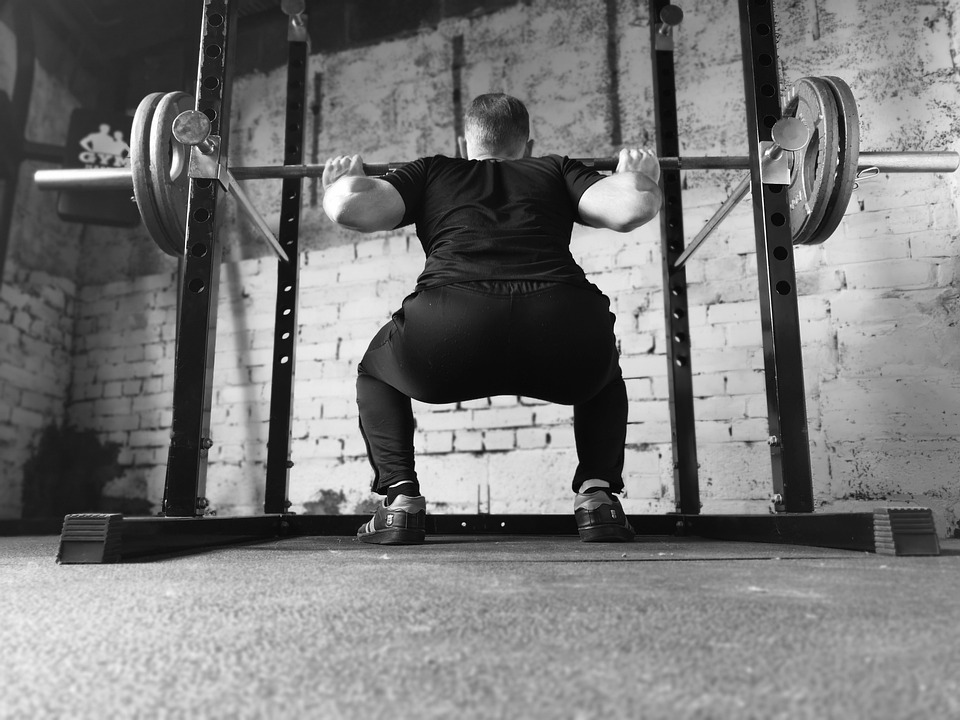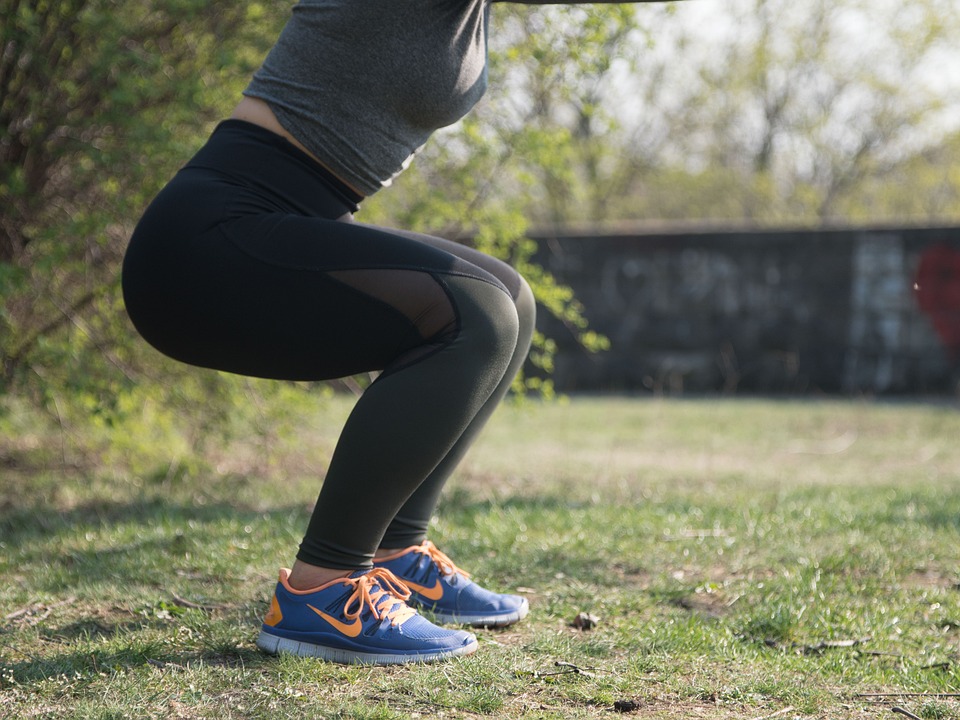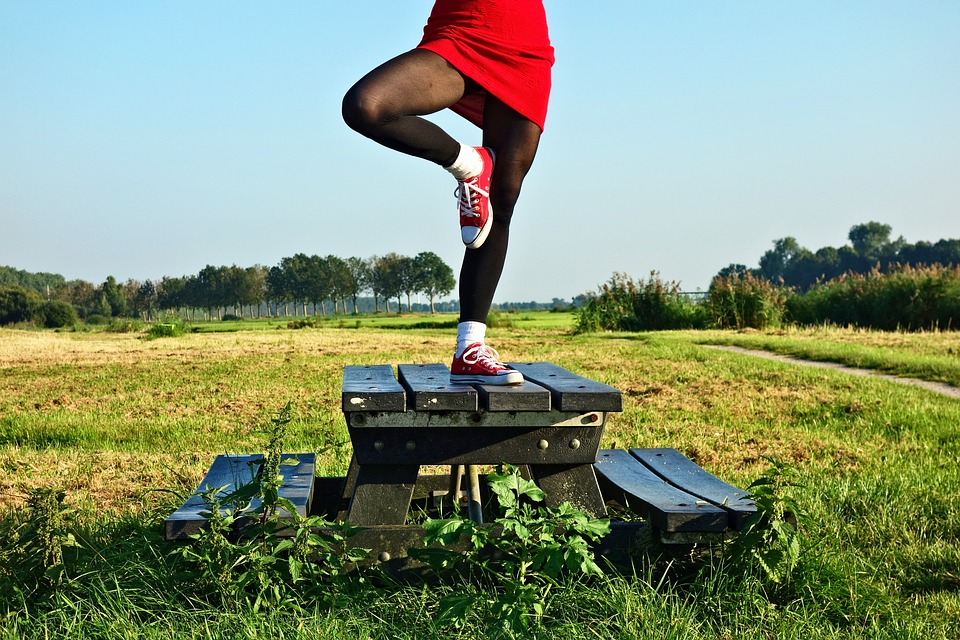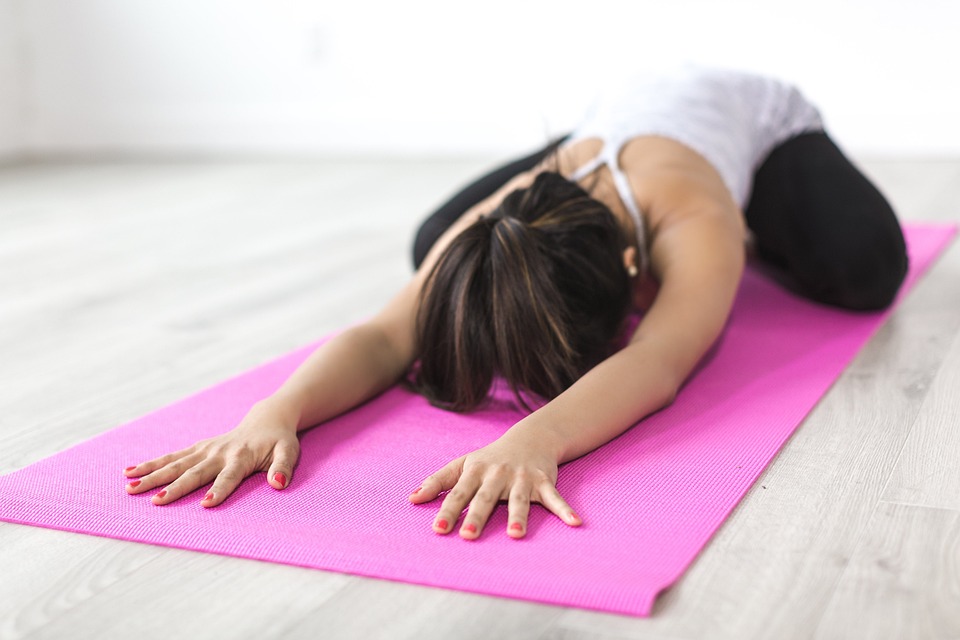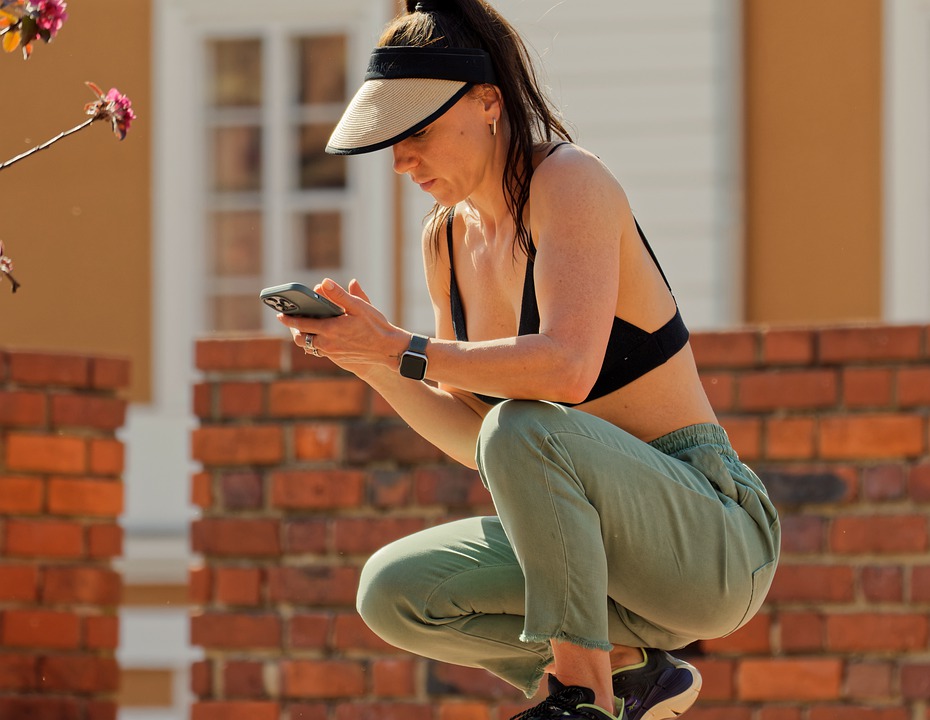
Why are some squats are better than others and how do you to correctly perform them?
Wall Squats
Wall squats are perfect for people who can’t do regular squats because they’re in pain. The ball and wall help you balance and take pressure off your knees and hips.
Choose a ball size that will allow the ball to come to midway between your knees and hips when you are standing. Position the ball between the small of your back and the wall with your torso upright and feet hip-width apart. Relax your hands by your side or clasp them in front of you with your knees slightly bent.
When you’re ready, engage your core and bend at the knees, squatting down in a slow and controlled movement. As you do so, the ball should roll with you as you descend. If you have knee pain, hip pain, or any limited range of movement, Jones says to squat a bit at a time, such as starting with a quarter squat, and progressing to a half squat. As long as it is within a pain-free range of motion, take a slight pause at the bottom of the movement before pushing through the floor to the start position. For more stability, push into the ball.
Barbell Front Squat
The barbell “front” squat is a less common variation of the barbell “back” squat, but it is just as effective. Top conditioning coaches prefer this movement because it is very effective. Some people even argue that it is a better movement than the back squat, especially for athletes.
The front bar back squat is a type of squat where the bar is placed in front of the body, on the shoulders. This position is known as the rack position. The rack position causes the body to be more upright, with less compression on the lower back. This exercise is good for building quad and core strength.
You need to have a high degree of mobility, including upper-body mobility, to do a front squat.
How to Perform
- Setup a rack in the same manner as a back squat EXCEPT you will likely want the bar slightly lower around chest height. The foot position will be more straight than a regular back squat.
- Stand up the bar so that you can place it on your upper chest
- Create a “rack” with your arms by bringing your elbows up and placing your fingers on the bar
- You do not fully grasp the bar. Just a few fingers will do. They. are mainly there to maintain balance
- Make sure to keep your elbows high the entire movement
- Unrack the bar and set the feet in a slightly narrower position then your squat
- Come down by bending at your knees and maintaining a vertical torso
- Once you hit bottom, come back up.
Safety Bar Squat
The safety bar squat is a squat variation that is very common in the strength training community. This exercise is a great option to perform as the movement is very similar to a regular squat but tends to be much more comfortable.
Ordinary squat bars don’t have the handles or the U shape. In order to do proper safety squat bar squats, you need a safety squat bar. This type of bar is different from a standard squat bar in that it has two handles that come out near your neck, creating a U shape that is covered in pads. This is where the bar sits on the body.
There are two handles you can hold onto, so your shoulders and wrists don’t have to bear any stress.
How to Perform
- Set up the rack with the safety bar
- Get under the bar so that your head is between the handles.
- Take some time to situate the bar in a comfortable spot
- Grab the handles and unrack the bar
- Step back in a normal squat position and perform as normal
Belt Squat
Belt squats are an excellent choice for people with lower back problems. The belt is attached to a pulley system, which allows the trainee to do the same movement as a squat but with no pressure on the back. This makes it the safest option.
This means that you can’t use heavy loads anymore, but you’ll be able to use them with no discomfort.
How to Perform (Using Squat Belt Machine)
- Load the machine first
- Step inside the belt and situate it to sit on your hips
- Stand tall to lift the weight and unrack
- Perform a squat in your desired stance
How to Perform (Using A Squat Belt And Boxes)
- Set up the boxes so they are at least 3-4 inches off the ground. This will depend on your belt length. The boxes need to be high enough so they will not touch the ground
- Add plates and attach the belt
- If possible, do this while already standing on the boxes
- Stand over the gap between the boxes and perform squats
Spanish Squat
Despite not being as well-known, the Spanish squat is a great variation of the barbell squat that won’t aggravate knee or joint problems since it doesn’t put as much pressure on the knees.
For this exercise, you will need a resistance band and a sturdy vertical pole, rack, or table leg. Step into the resistance band with both legs, and wrap it around the pole. Keep the band behind your knees and keep your torso straight. Squat down until your thighs are level with the ground, then come back up.
Reverse Lunges
Reverse lunges are a great alternative to squats, especially if you have knee or hip joint pain. They’re also more effective than squats in working your entire body but particularly your lower body. And the best part is, as Ingram states, they place “limited stress on the knees or hip joints.”
Finally, repeat with the right leg. Stand with your feet hip-width apart and your hands on hips. Take a large step backward with your left foot, making sure the opposite knee (right) is at a 90-degree angle. Press through the right heel to return to a standing position. Finally, repeat with the right leg.
Ingram recommends doing 3 sets of 12-15 reps on each side for the best results. To make the exercise more difficult, try holding dumbbells or using a barbell.
Glute Bridges
The glute bridge exercise is a good way to work your glutes and lower body without having to squat. Glute bridges are usually done as part of other compound movements, but they can also be done as a strength exercise on their own.
Do not arch your lower back; you should feel a neutral pelvis. Start the movement by elevating your hips off the floor until your thighs and torso are in line with each other, and you’re balanced on your shoulder blades and your feet. Hold this contraction for two seconds before slowly lowering your body back to the starting position. This is one rep. Lie on your back on the floor, with your knees bent and your feet on the ground. Brace your core by drawing your belly button into your spine and “packing” your abs under your ribcage. Keep your pelvis neutral (do not arch your lower back). Elevate your hips off the floor until your thighs and torso are in line with each other, and you’re balanced on your shoulder blades and your feet. Hold for two seconds, then slowly lower your body back to the starting position.
Pause in this position and then return to the starting position, making sure not to arch the lower back or swing the weights. To complete the move, brace yourself then drive up through your feet from your heels to your mid-foot. “Fully contract your glutes and hamstrings, driving your hips upward until they’re fully extended,” Jones says. You should feel the tension in your glutes at the top of the movement. Pause in this position, then return to the starting position and make sure not to arch your lower back or swing the weights.
Glute bridges are a great exercise because they can be adjusted to your fitness level. You can make the exercise more difficult by adding weights or a band.
Romanian Deadlift
If you are someone who cannot squat down due to knee pain, Romanian deadlifts are a great way to target your lower body without irritating your knees. This exercise is especially effective in targeting your glutes and hamstrings.
To do this move, hold a weight in front of you with your arms straight down, feet shoulder-width apart, and knees slightly bent. Slowly hinge at your hips to lower the weight toward the floor until you feel a stretch in your hamstrings. Your back should stay straight the whole time. Once you feel the stretch, drive your hips forward and push through your feet to stand back up.
Zercher Squats
Zercher squats, which were once popular among older lifters, could be the new stimulus you need for full-body development.
This variation of the squat exercise uses the same equipment as a barbell squat, but instead of holding the barbell high, you cradle it in your arms using the nook of your elbows. This creates a more intense stimulus for your upper body and core.
The Zercher squat can help improve your squatting form by highlighting any underlying issues that are preventing clean form. This exercise is especially useful for beginners, as it is difficult to do with poor form.
How to Perform
- Rack a bar in a much lower position than normal. It should be slightly lower than the height of your elbow.
- Place knee or elbow sleeves over your arms if desired
- Walk up to the bar and place it in the nook of your elbows. Wrap your arms around. Many people will cross their arms
- Step back and perform your squat
- Be sure to maintain back stability
- Start with low weights. You’d probably benefit from just using a bar to start
Trap Bar Deadlift
Some people are surprised when they are told to do a trap bar deadlift, but it makes sense when you look at the biomechanics. The trap bar deadlift is similar to the squat in terms of knee flexion and hip flexion. This means you will get more muscle activity in the quadriceps.
In addition, you can use a heavier weight when performing trap bar deadlifts than other variations such as the regular barbell deadlift or stiff-leg deadlifts.
There are two main benefits to trap bar deadlifts – less torque on the back and less knee flexion. These benefits make the exercise ideal for people with back or knee pain.
How to Perform
- Place weight onto the trap bar
- Step into the middles of the trap bar so your feet are in line with the handles
- Bend down to grab the handles
- Bend your knees and push your hips back to get into a deadlift-like position
- To perform the movement more similar to a back squat, let your knees come forward some rather than keeping them vertical like in a deadlift. This will put more stress on the quads
- Stand up with the weight
Landmine Squats
Landmine squats are easy to set up and a mix of machines and free weights. With this exercise, you use your full body and your stabilizing muscles to control movement. It’s a great exercise that can be used by athletes of any level. The benefits of landmine squats include ease of set-up, ease of learning, and effectiveness.
A great way to train your whole body quickly is to use landmine exercises.
How to Perform
- Setup your landmine
- In one motion, lift the bar up so that the end is in your chest
- Grab the end of the barbell with both hands interlocked. The bar should sit in a “cup” made by your hand
- In the starting position, keep the barbell up against your chest
- Stand back up
- Be sure to keep the barbell close to the body during the entire movement.
Step-ups
Step-ups are the best alternative to squats if you’re limited on available exercise space and if you’re suffering from knee/joint pain. Step-ups reduce the load going through your back, especially when doing weighted movements.
He suggests starting with a lower step height, especially if you experience any pain. Then, you can increase the height as you and your confidence become stronger.
The author explains that many people who experience knee pain when performing step-ups often make the mistake of moving away from the pain, which actually puts more pressure on the knee joint.

